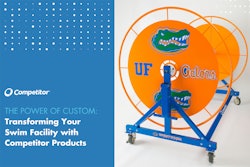|
Copyright 2013 Madison Newspapers, Inc. All Rights Reserved The Capital Times (Madison, Wisconsin) |
|
October 30, 2013 Wednesday
ALL EDITION |
|
THE CAP TIMES; Pg. 12
|
|
476 words
|
| REPORT: FOOTBALL TICKET REVENUE SHARING COST UW MORE THAN $950,000 IN 2012; SPORTS |
|
TODD D. MILEWSKI , The Capital Times , [email protected]
|
|
When it comes to football gate revenues, the Big Ten Conference takes from the rich to give to the poor. Under a long-held revenue sharing plan, more than $6.6 million went from the Big Ten's top seven gate-revenue-producing schools - the University of Wisconsin included - to the bottom five in the 2012 season, according to an analysis by The Gazette of Cedar Rapids, Iowa. The Wisconsin athletic department contributed more than $950,000 to that transfer in a system that The Gazette found was unique among major college football conferences. Here's how it works: Big Ten teams share 35 percent of the net gate receipts, after sales tax, from conference home games, up to $1 million per game and at minimum $300,000 per game. Each school has four conference home games per season, meaning the most any would pay in is $4 million. Five schools reached that level in 2012: Iowa, Michigan, Nebraska, Ohio State and Penn State. The money from that pool gets split 12 ways and returned evenly to the schools. In 2012, the total of gate receipts for the league's 48 games was $36,458,053.71, or $3,038,171.14 per school. Those five schools that paid in $4 million each ended up with a net loss of $961,828.86. Wisconsin paid in a little less - three of its four home games reached the $1 million cap but the home game against Illinois did not - so its loss was a little less as well. It ended up being $957,854.22 out of the Badgers' budget. Randy Marnocha, the UW associate athletic director for business operations, told a meeting of the UW Athletic Board's finance, facilities and operations committee earlier this month that the department had budgeted to lose $800,000 last year in that revenue sharing agreement. Michigan State also had a net loss ($862,933.66), while five schools had a revenue gain from the program: * Indiana, $1,722,143.29 * Illinois, $1,312,175.70 * Northwestern, $1,271,654.13 * Minnesota, $1,266,143.74 * Purdue, $1,057,815.29 Football gate receipts aren't the only kind of money shared by Big Ten schools. Each year, they get a payout from the conference on media revenues, including those from the Big Ten Network. Marnocha told the finance committee that in the 2012-13 school year, the athletic department brought in over $16 million from Big Ten media revenue. Conference officials said the football ticket revenue sharing idea goes to the heart of the Big Ten philosophy. "It's very important philosophically because it was the first real commitment on the financial end, that our schools recognized that great things can be achieved by the collective good to share revenue in a way that's beneficial to all," Big Ten deputy commissioner Brad Traviolia told The Gazette. "It's important to continue. "It's worked well for us. It's a trust and a camaraderie among our institutions that's been developed over a century. It's part of who we are." |
|
October 31, 2013
|
Terms and Conditions Privacy Policy



































